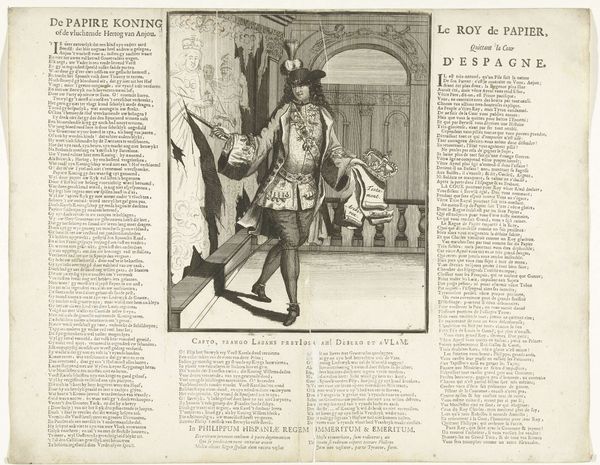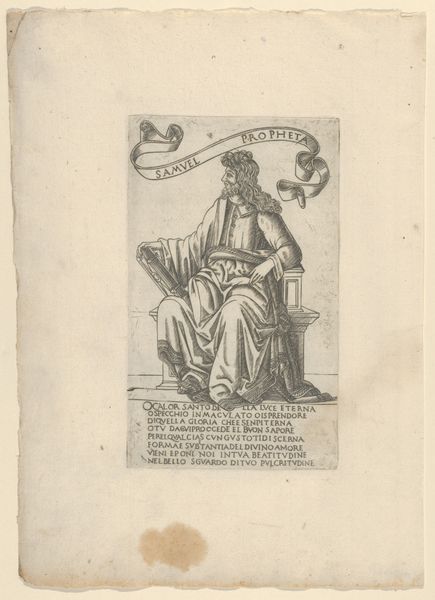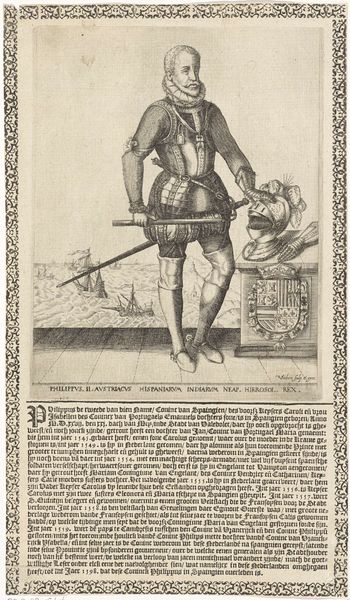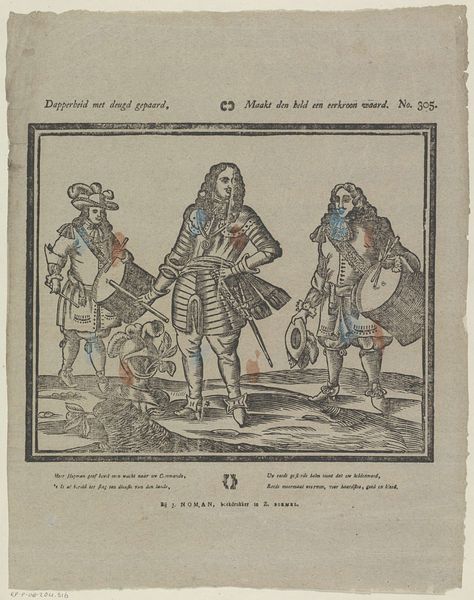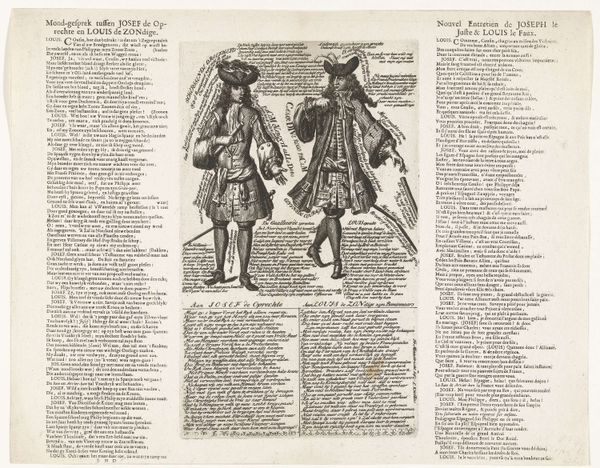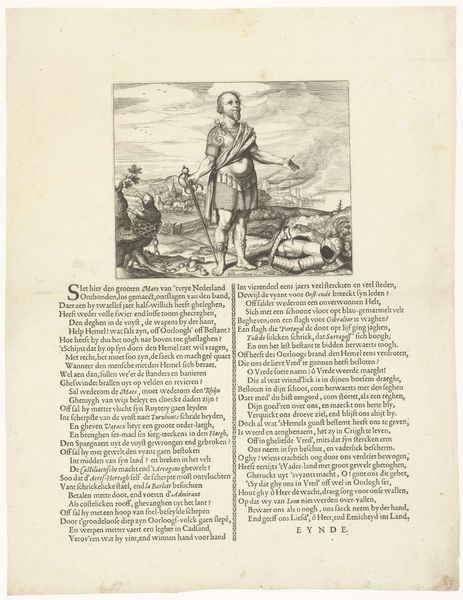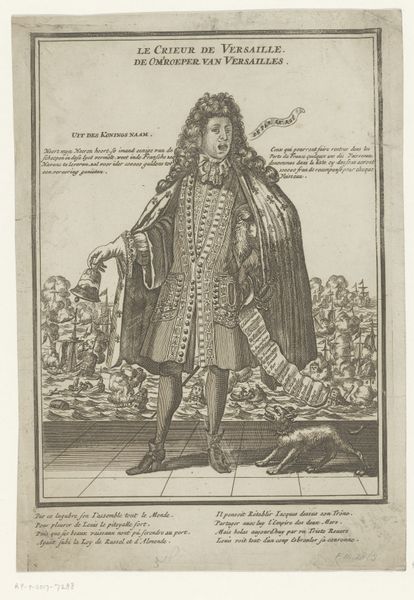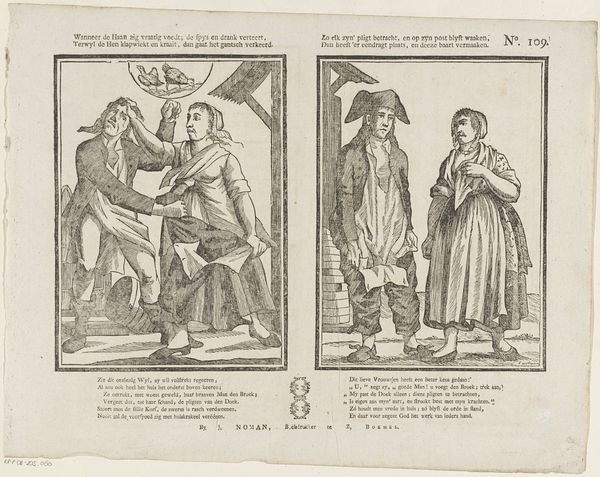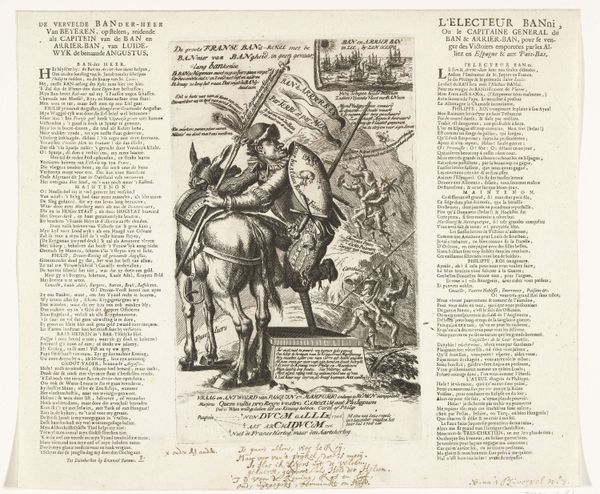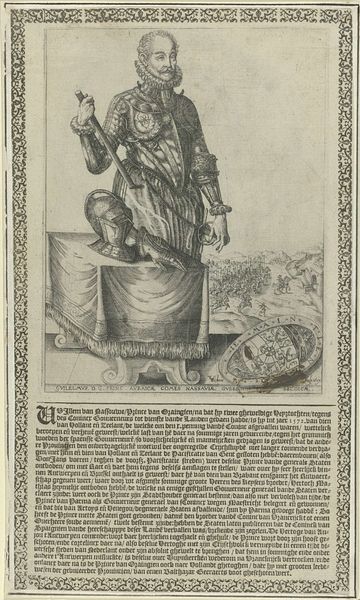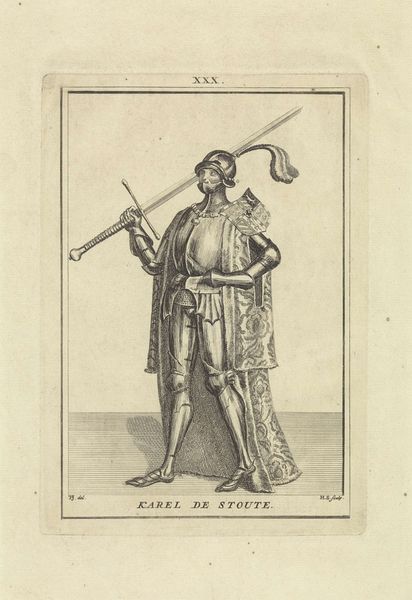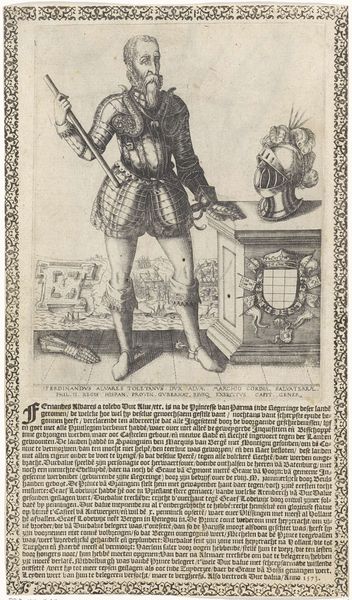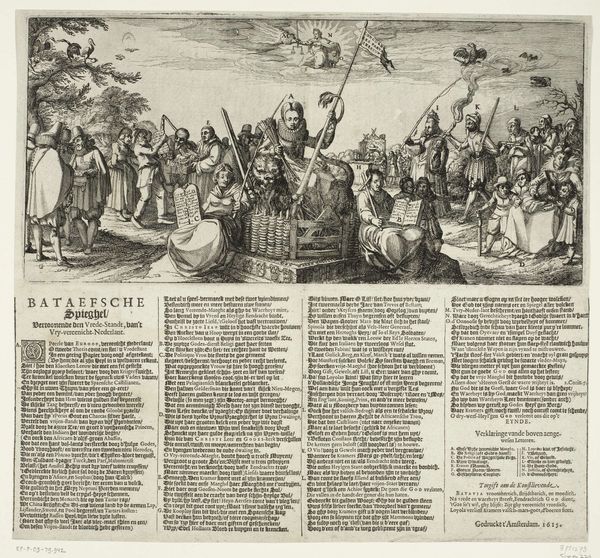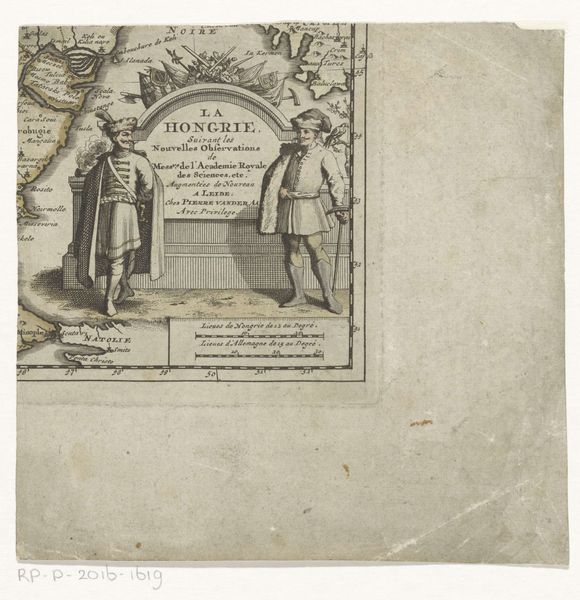
engraving
#
baroque
#
history-painting
#
engraving
Dimensions: height 320 mm, width 410 mm
Copyright: Rijks Museum: Open Domain
Curator: This engraving depicts Archduke Charles of Austria as King of Spain. Created around 1706, this artwork on display at the Rijksmuseum captures a pivotal moment in European history. What do you make of it? Editor: The detail is astounding! The figure feels stiff and overly adorned, almost burdened by the regalia. I see attempts to show confidence in the portrait, but it only communicates arrogance and pride through artful lines, doesn't it? Curator: It does indeed show an attempt at power projection! The War of the Spanish Succession raged, and this image was likely circulated to legitimize Charles' claim to the throne amidst the political turmoil. The background with Madrid helps too, of course. Editor: Interesting. If we bracket out its historical setting for a moment, consider how the engraver uses dense cross-hatching to render the heavy drapery and metallic gleam of his armor. Visually, everything points to creating contrast, the background is lighter than Charles’ clothing, the skin tone as well… All so readable, even without being colorful. Curator: Exactly, consider who the work was aimed at: a wide, literate public hungry for imagery associated with complex claims and a new, hoped-for, future order. How the King looks must inspire trust, not just display nobility, right? Editor: True! I still think it reads a bit heavy-handed in execution. A more minimalist approach may have had greater sophistication, if not greater impact, back then... Curator: Perhaps, but the visual density mirrors the complexity of the political situation. It's a dense image for a turbulent period. Editor: Looking closely, I can't help but appreciate the line work defining the face – sharp and unflinching. Flaws or no flaws, this feels appropriate for engraving with its focus on stark lines. Thank you, fascinating. Curator: I agree, understanding the intent and historical context enriches the viewing experience here. I feel it allows a far more nuanced interpretation, and a new look at this style of imagery.
Comments
No comments
Be the first to comment and join the conversation on the ultimate creative platform.
